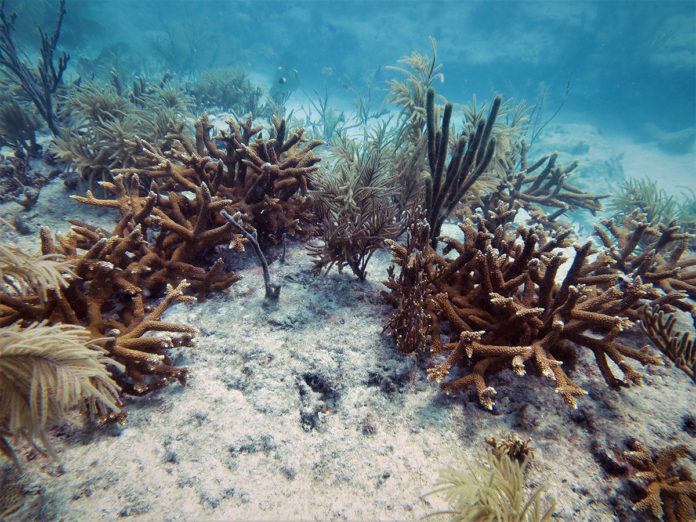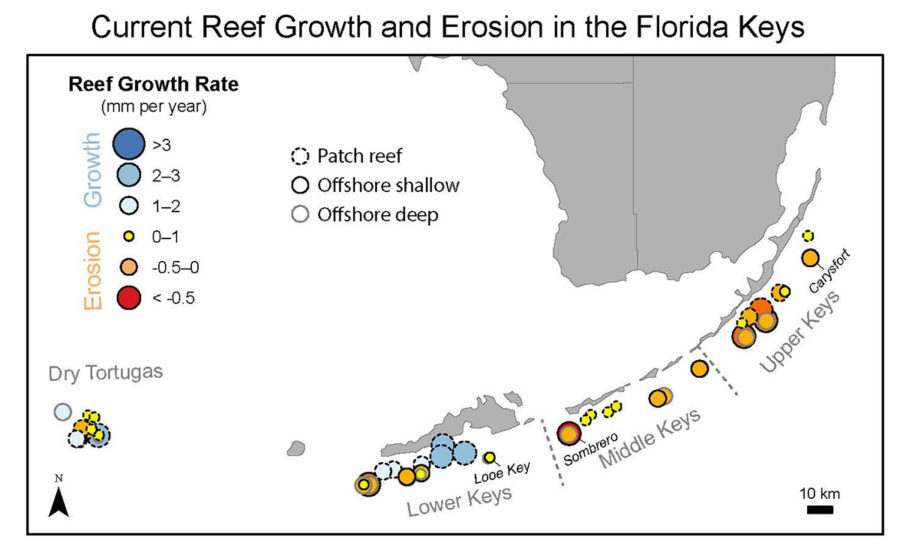
Some eroding coral reefs in the Florida Keys could begin growing again at historical levels — as fast as their peak 7,000 years ago — if restoration goals planned for the area are achieved.
A new study led by the U.S. Geological Survey (USGS) is the first to estimate coral reef growth versus erosion throughout the Keys and can help guide conservation decisions. Prior to this study, rates of erosion have only been estimated for some sites in the Keys.
Climate change, extreme temperatures, disease outbreaks and other stressors in recent decades have affected the ability of reefs to grow, causing reef erosion. Healthy coral reefs provide habitat for fish, lobster, crabs and other marine life. They also contribute billions of dollars per year to the global economy by supporting the recreational and commercial fishing industries, attracting tourism and protecting coastal communities from floods and storms.
In this new research, the USGS and partners find that about 85% of reefs in the Florida Keys are eroding. Scientists used real-world data to assess historical and present-day trends in reef growth at 46 sites. The study provides a map showing where reefs are eroding and at what rate for specific locations.
Scientists also developed future scenarios for three of those sites. The scenarios assume restoration plans outlined in the National Oceanic and Atmospheric Administration’s Mission: Iconic Reefs initiative are met through the year 2040.

Researchers find that if those goals are met, it may be possible for some locations to restore their reef-building capacity to historical levels and that might be enough to maintain key ecosystem services. Projected growth rates could also be enough for coral reefs in the Keys to keep pace with mid-range projections of future sea-level rise.
Another insight from this study is that patch reefs, which are small and isolated reefs located inshore in the Lower Keys, have continued to grow despite recent stressors. Those reefs are in areas with lower water clarity, supporting the hypothesis that reefs exposed to less sunlight have reduced thermal stress (heat from the sun).
To determine reef growth rates, scientists studied what they call “carbonate budgets.” The budget is calculated by looking at carbonate production, or how much coral skeleton is produced; and bioerosion, or how much coral skeleton is eaten away by organisms living on the reef.

NOAA’s initiative targets seven locations for future restoration, and the three included in this study are Looe Key, Sombrero and Carysfort reefs.
Read the scientific article published in Global Change Biology at https://onlinelibrary.wiley.com/doi/10.1111/gcb.16295.
Watch a video about this project at https://www.usgs.gov/media/videos/lauren-toth-coral-restoration.
Research was led by the USGS and done in collaboration with the University of California San Diego, University of Puerto Rico Mayagüez and the Florida Fish and Wildlife Conservation Commission.




















